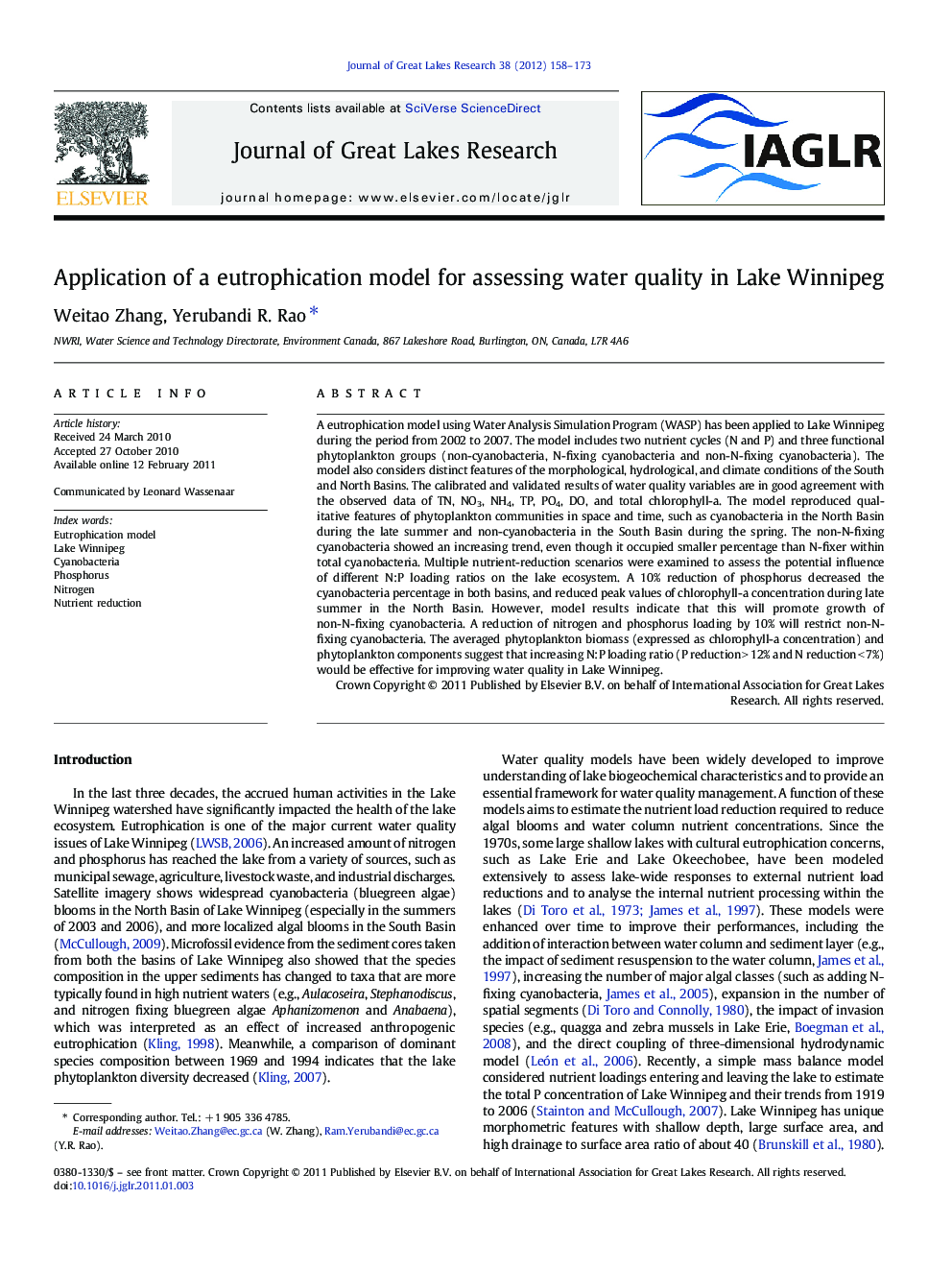| Article ID | Journal | Published Year | Pages | File Type |
|---|---|---|---|---|
| 4398829 | Journal of Great Lakes Research | 2012 | 16 Pages |
Abstract
A eutrophication model using Water Analysis Simulation Program (WASP) has been applied to Lake Winnipeg during the period from 2002 to 2007. The model includes two nutrient cycles (N and P) and three functional phytoplankton groups (non-cyanobacteria, N-fixing cyanobacteria and non-N-fixing cyanobacteria). The model also considers distinct features of the morphological, hydrological, and climate conditions of the South and North Basins. The calibrated and validated results of water quality variables are in good agreement with the observed data of TN, NO3, NH4, TP, PO4, DO, and total chlorophyll-a. The model reproduced qualitative features of phytoplankton communities in space and time, such as cyanobacteria in the North Basin during the late summer and non-cyanobacteria in the South Basin during the spring. The non-N-fixing cyanobacteria showed an increasing trend, even though it occupied smaller percentage than N-fixer within total cyanobacteria. Multiple nutrient-reduction scenarios were examined to assess the potential influence of different N:P loading ratios on the lake ecosystem. A 10% reduction of phosphorus decreased the cyanobacteria percentage in both basins, and reduced peak values of chlorophyll-a concentration during late summer in the North Basin. However, model results indicate that this will promote growth of non-N-fixing cyanobacteria. A reduction of nitrogen and phosphorus loading by 10% will restrict non-N-fixing cyanobacteria. The averaged phytoplankton biomass (expressed as chlorophyll-a concentration) and phytoplankton components suggest that increasing N:P loading ratio (P reduction > 12% and N reduction < 7%) would be effective for improving water quality in Lake Winnipeg.
Related Topics
Physical Sciences and Engineering
Earth and Planetary Sciences
Earth and Planetary Sciences (General)
Authors
Weitao Zhang, Yerubandi R. Rao,
